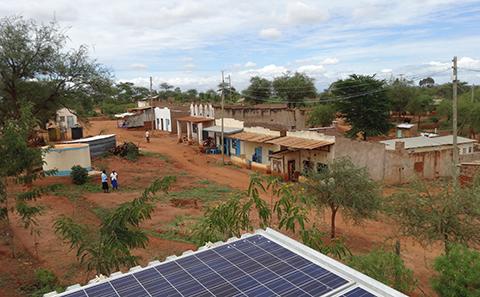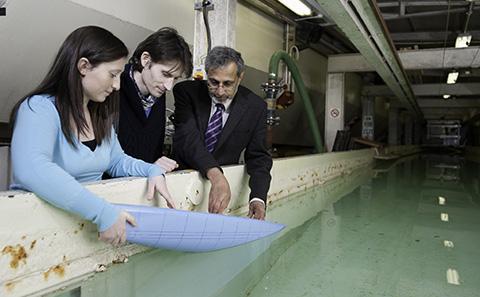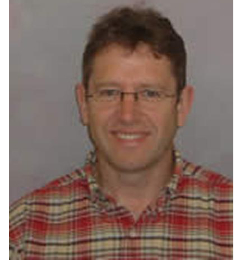Drone technology
How drones are changing our lives.
With rapid advances in technology, drones – also known as unmanned aerial vehicles (UAVs) – are having an increasing impact on our lives, from the food we eat to the films we watch at the cinema. Professor Jim Scanlan gives an insight into their potential and their safety.
Drones already have a huge impact on our lives. For example, they are involved in producing our food: large, professional farms now routinely use drones to detect areas of weeds and poor yield that they need to target for herbicides and fertilisers. This saves farmers a lot of money and prevents them releasing unnecessary chemicals into the environment. Other uses include atmospheric research – to monitor pollution, the weather and climate, and in scientific studies that involve monitoring hazardous areas like volcanoes. They are also having an impact on popular culture; all the film companies use them now and the aerial shots you see in the latest films and TV programmes are captured by drones.
They have great potential; a step change would be the ability to operate drones safely in populated areas – delivering parcels, doing maintenance on buildings and filming events like the London Marathon. For this, drones need to be extremely reliable, so that if one of the rotors fails, it won’t fall into a crowd or road. Through our research, we are trying to understand why components of drones fail – for example whether it is vibration, heat or wear, so that we can build drones that can withstand these problems.
Southampton is the leading UK university in drone technology. In 2015, we were chosen as the sole UK partner to help operate the new Federal Aviation Administration-funded National Centre of Excellence for Unmanned Aircraft Systems in the USA.
Drones could improve safety at large events by monitoring and controlling crowds: if you are looking from above you can see things developing that you can’t see from the ground, so they could be valuable for the police, security services and fire services. They could also be valuable in maritime search and rescue: if someone is lost at sea, drones can search for them very quickly and efficiently.
I’m often asked whether the current regulations around drones are strict enough, given the recent near misses at airports that have been reported in the media. Here in the UK they are well regulated, with clear guidance from the Civil Aviation Authority (CAA). These include keeping the drone in your line of sight at all times by flying below 122m (400ft), not flying within 50m of populated areas, vehicles and structures, and staying away from areas of controlled airspace like airports. These regulations are sufficient and sensible at the moment; it’s illegal activity that is causing the problems.
There are slight differences between regulations in the EU and US but there is an attempt to harmonise these.
The US has recently introduced rules where anyone who owns a small unmanned aircraft that weighs more than 0.55lb (250g) and less than 55lb (25kg) must register it with the FAA’s Unmanned Aircraft Systems registry before they fly outdoors. Again, this might have the effect of penalising law-abiding citizens and having no impact on illegal activity. Other countries are watching this with interest to see if it is successful.
Southampton is the leading UK university in drone technology. In 2015, we were chosen as the sole UK partner to help operate the new Federal Aviation Administration-funded National Center of Excellence for Unmanned Aircraft Systems in the USA. We are collaborating with our colleagues in the USA to share knowledge and research into expansion of operations and safety. The facilities here at the University are state-of-the-art. We have around 30 drones, two £500,000 Mercedes control vans, fitted with radio masts and control systems, which control and track our drones, as well as reliability labs, wind tunnels, engine test facilities and local flying fields.
We are working on several interesting projects that show how useful drones can be on scientific missions. For example, with colleagues in Geography, we are using drones to capture imagery of riverbanks to monitor erosion and flooding of coastal regions. And, in collaboration with colleagues at the University’s Institute for Life Sciences, we are using a drone to help optimise water conservation in crop production in Portugal.
We are also working with the shipping industry – both commercial and naval – to see how drones could benefit their operations. Shipping companies generally worry about three things when they are doing Atlantic crossings: avoiding whales, icebergs and pirates. Ideally, civilian shipping companies would like some imagery from 20 to 30km ahead to check for these hazards, and a cheap, semi-disposable aircraft would be ideal for this task. Here at Southampton, we produced the world’s first printed aircraft, and this is what we have been using for this project. Printing technology is attractive because it is relatively cheap – if you damage a wing, you can just print another one. We have recently done some trials in the south Atlantic to check how well the drones operate in poor weather conditions – particularly low temperatures – and this was extremely successful. It’s a very exciting time to be working in this area of research.
Farnborough Airshow
The University's Unmanned Air Vehicle team flying display on day 1 at Farnborough International Airshow 2016
Watch the videoOther University of Southampton sites
Links to external websites
The University cannot accept responsibility for external websites.
For more information on Jim's research
You may also be interested in:

Making the internet faster
Our research connects the planet; the whole global internet relies on our invention of erbium-doped fibre amplifiers that boost optical signals to allow fast telecommunications.

Adapting to future energy demands
Delivering energy smarter, locally and globally.

Future-proofing our oceans
Conserving ocean spaces and developing the ships and naval vessels of the future.
